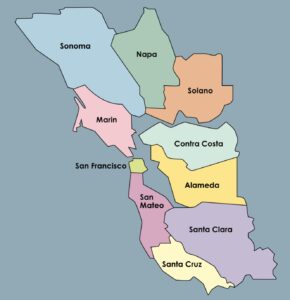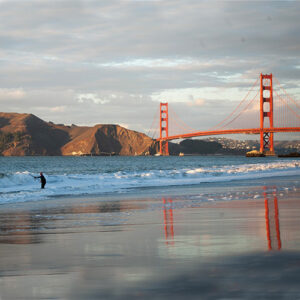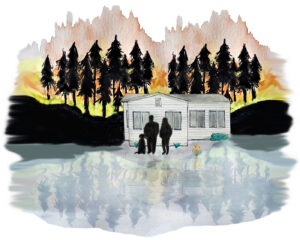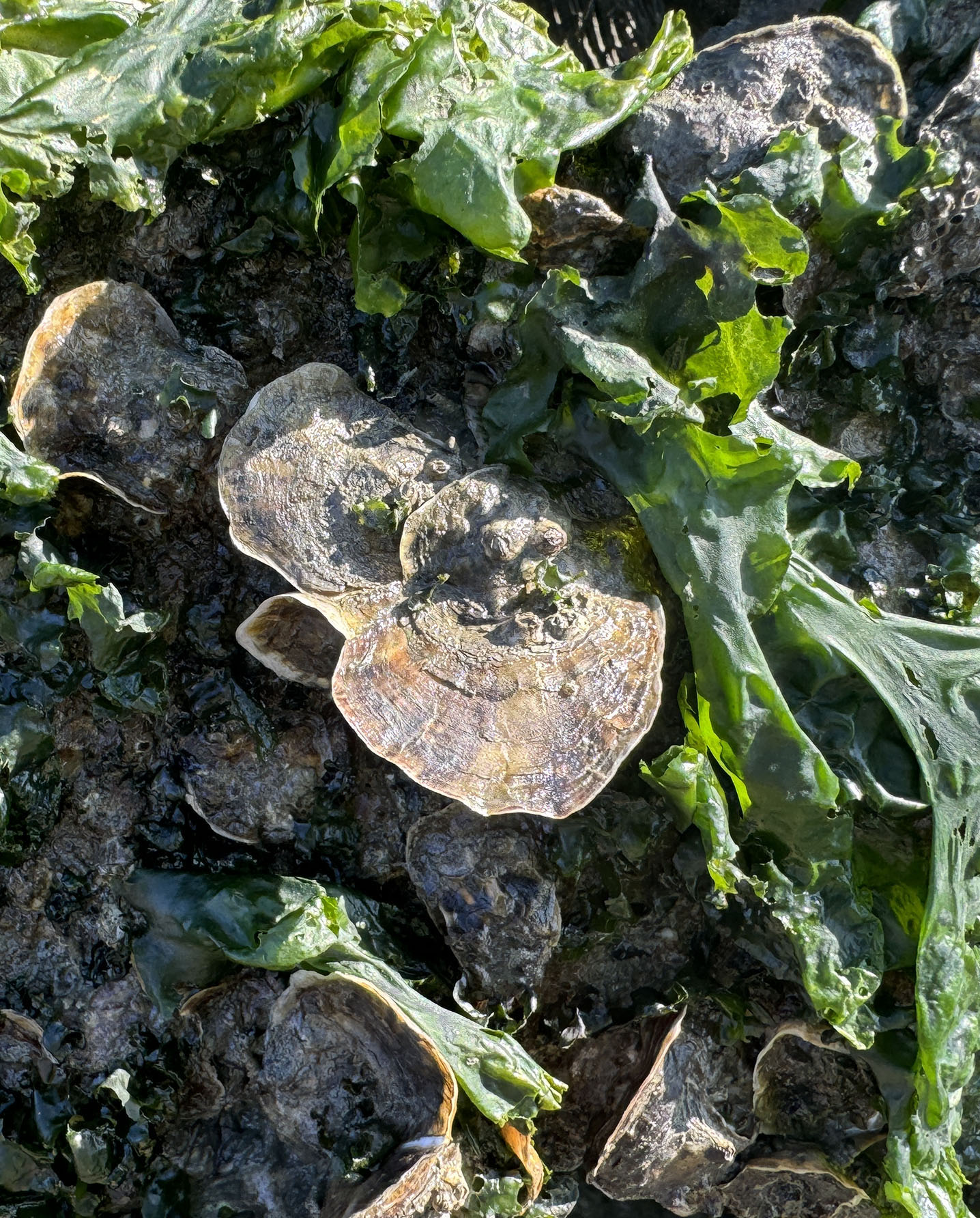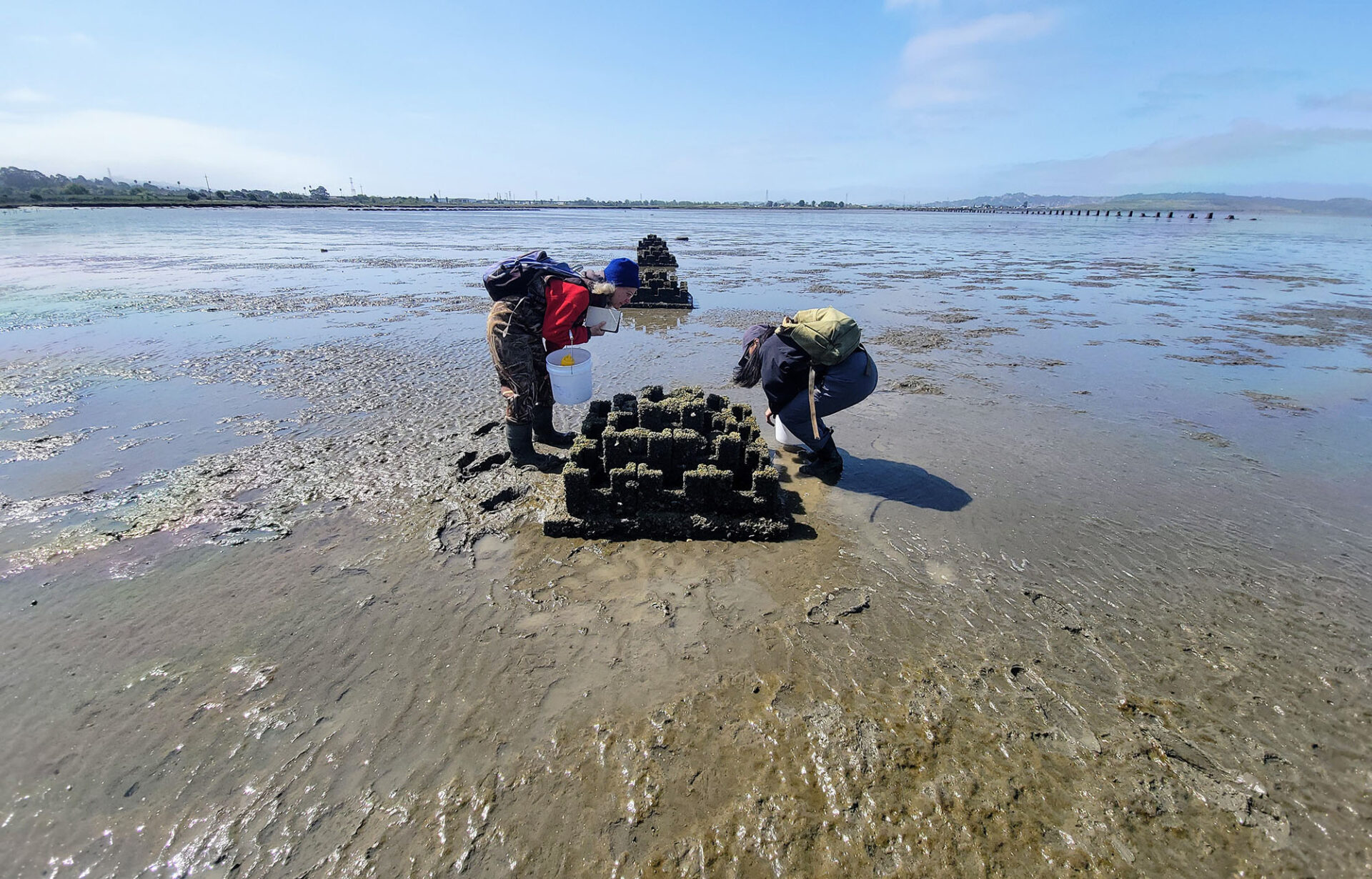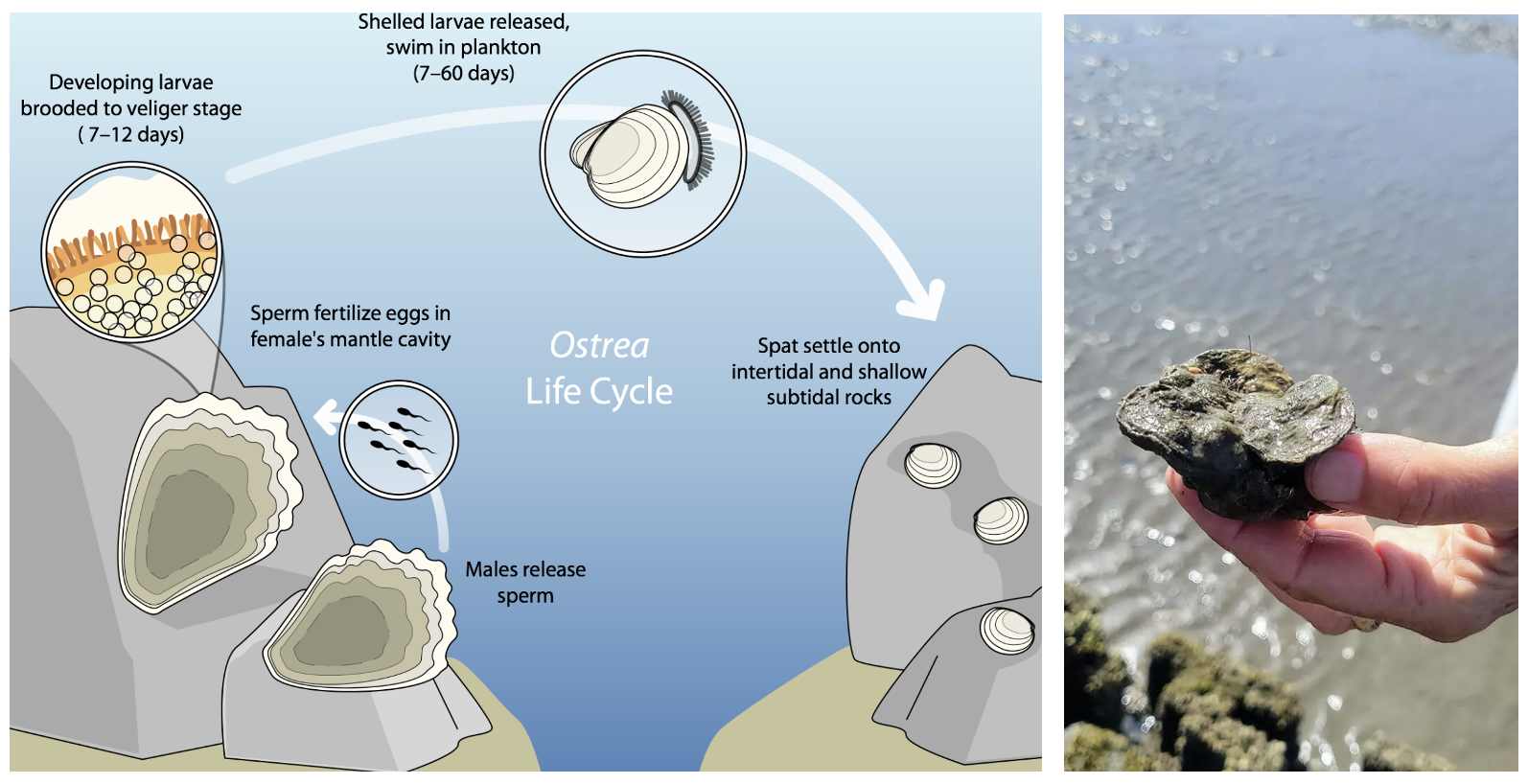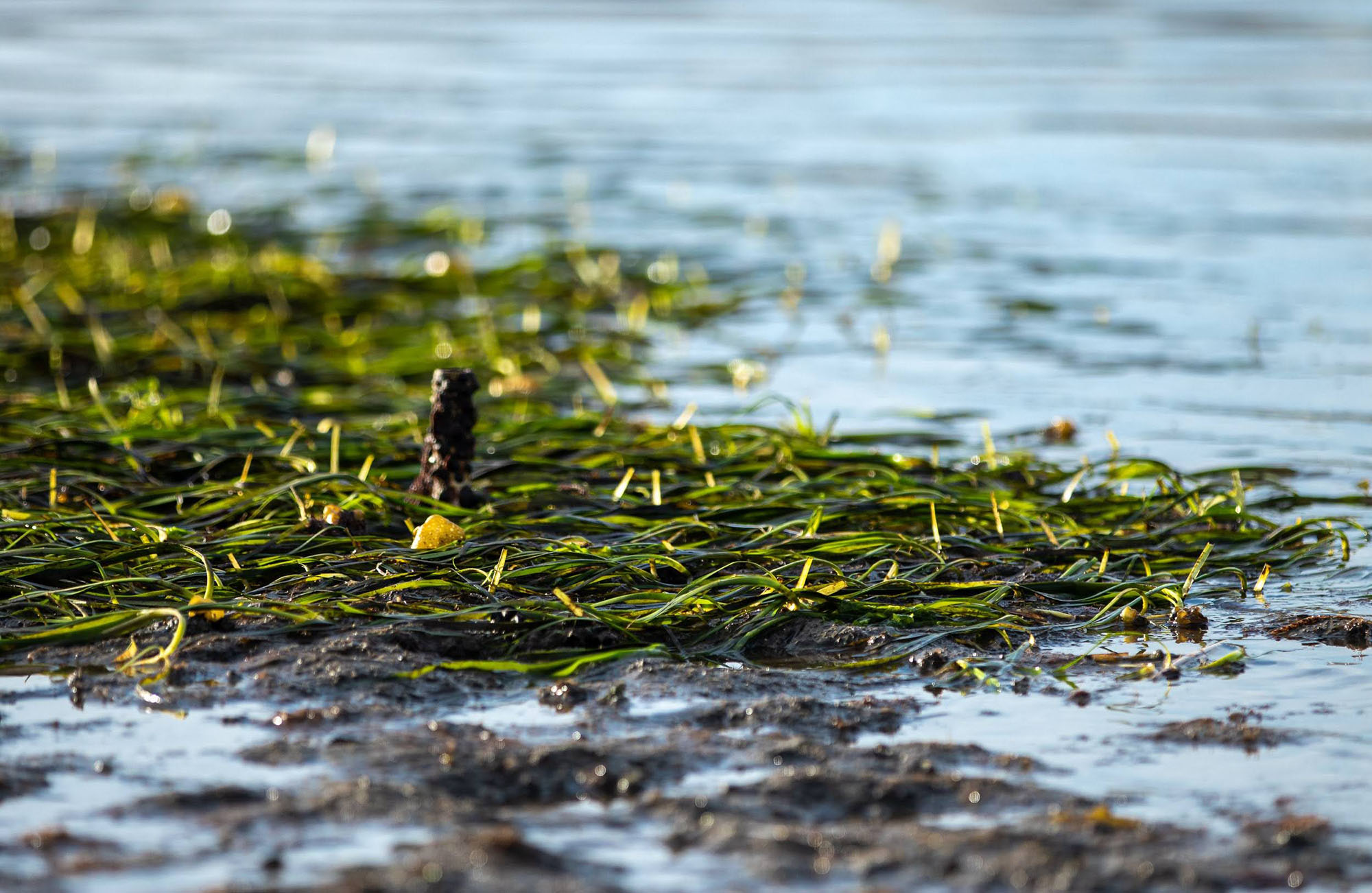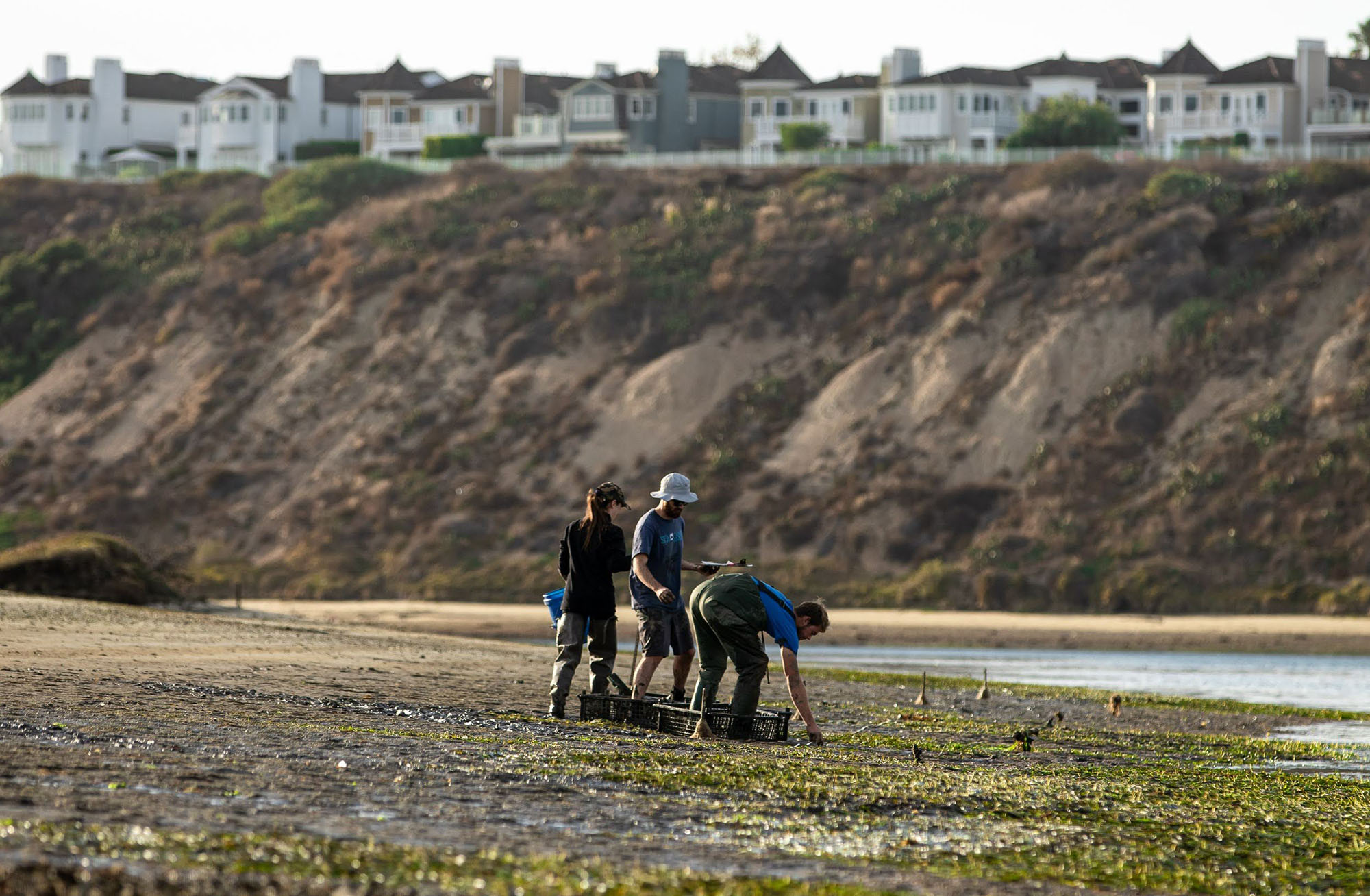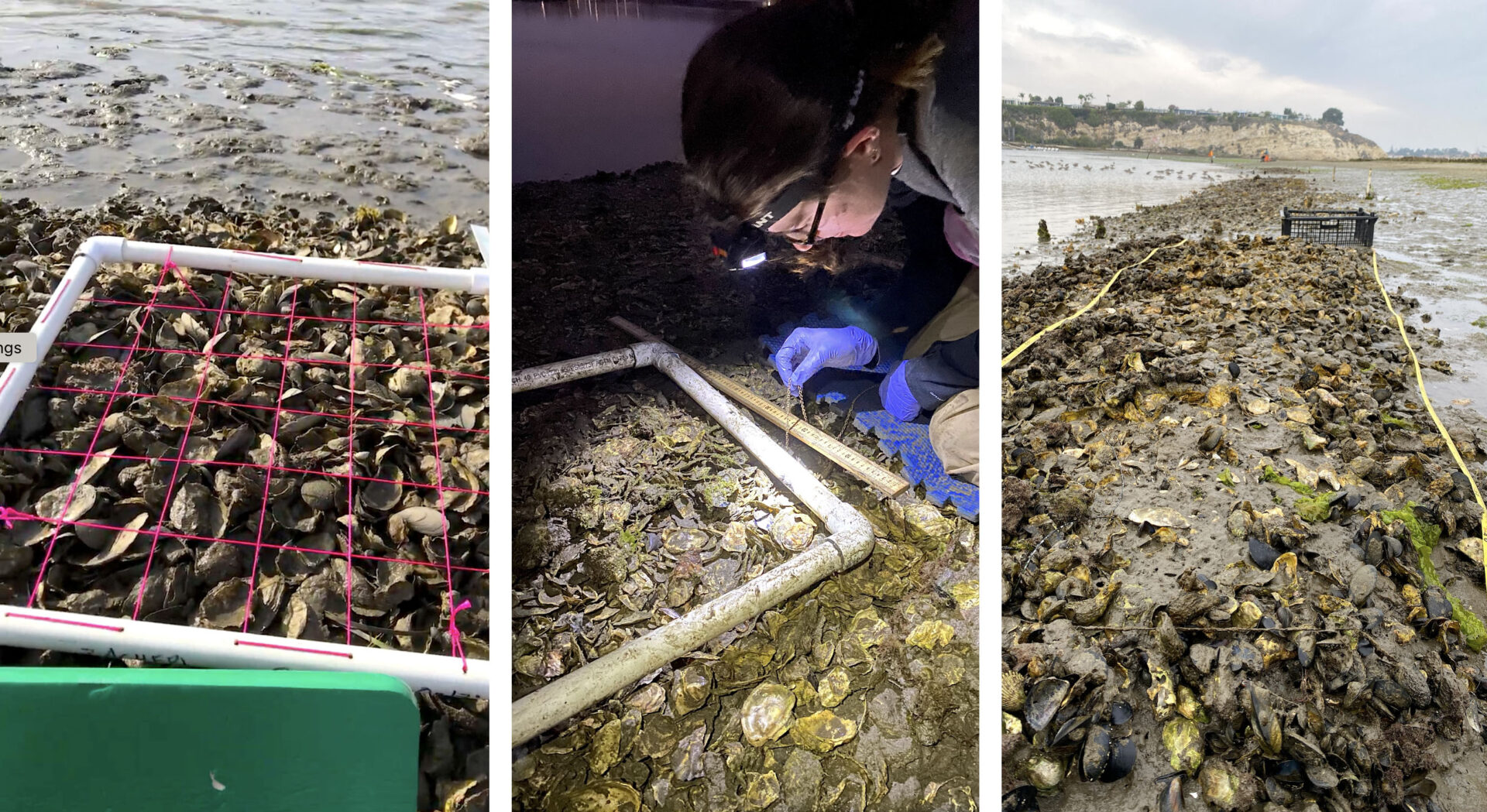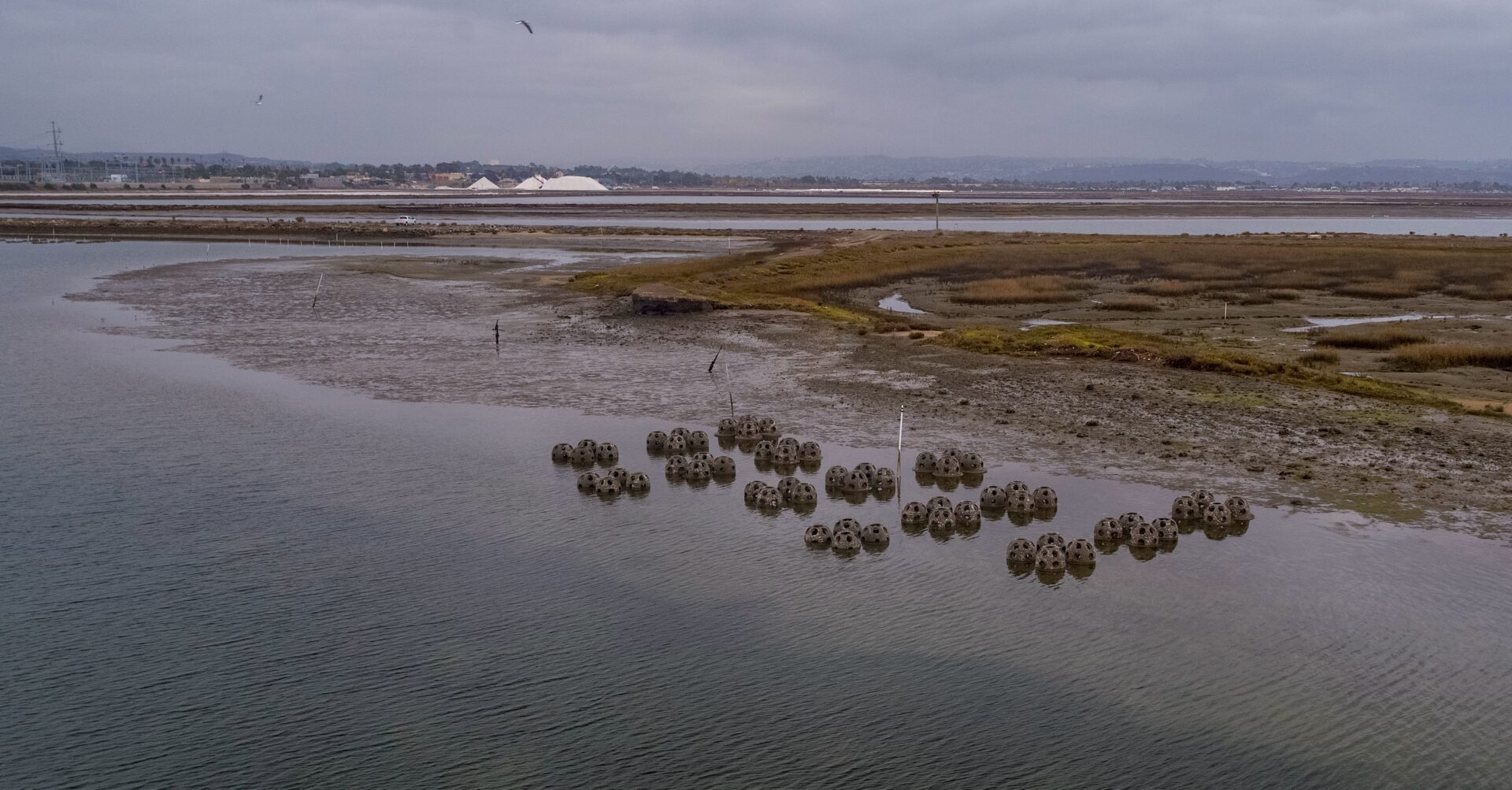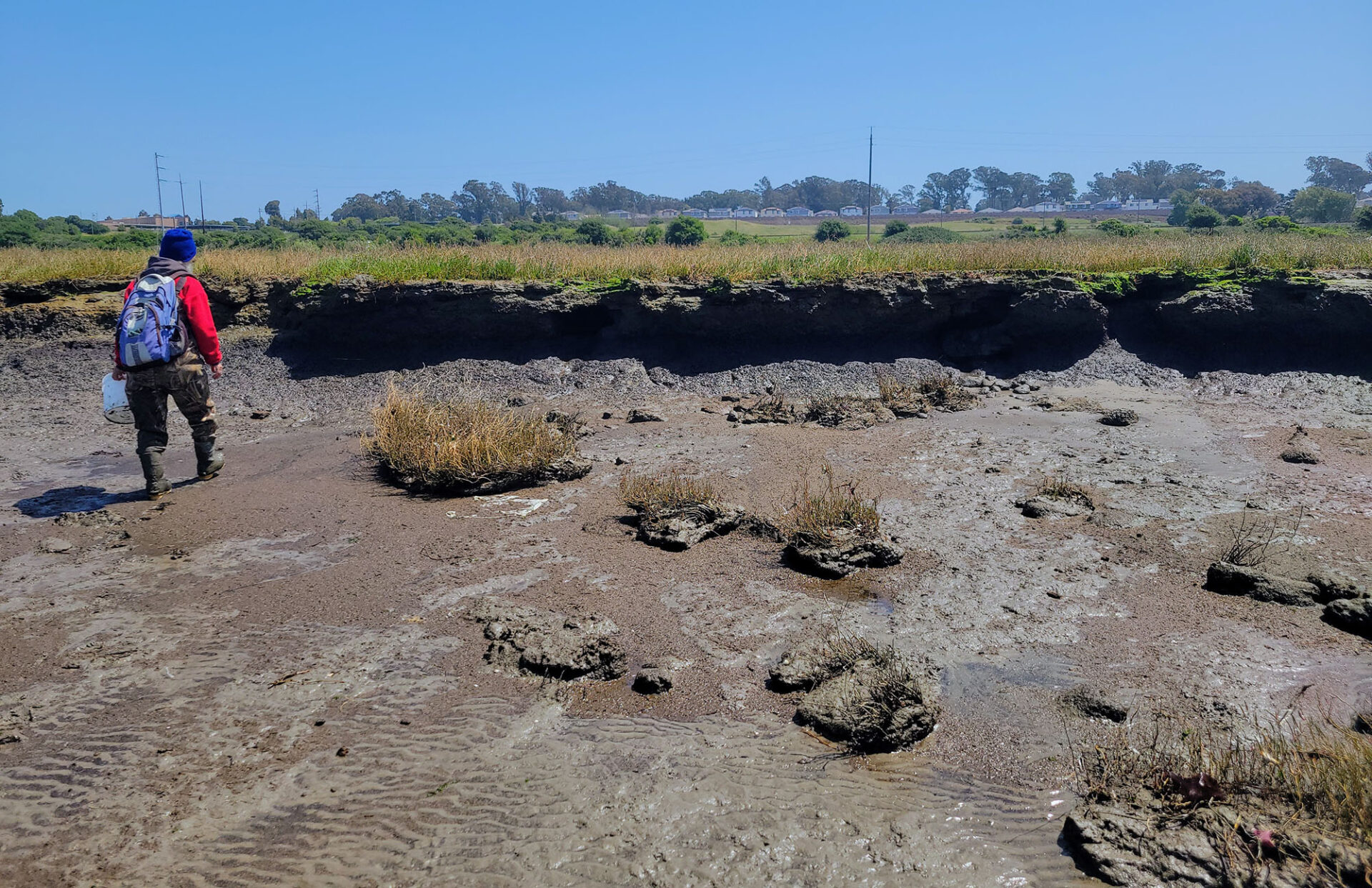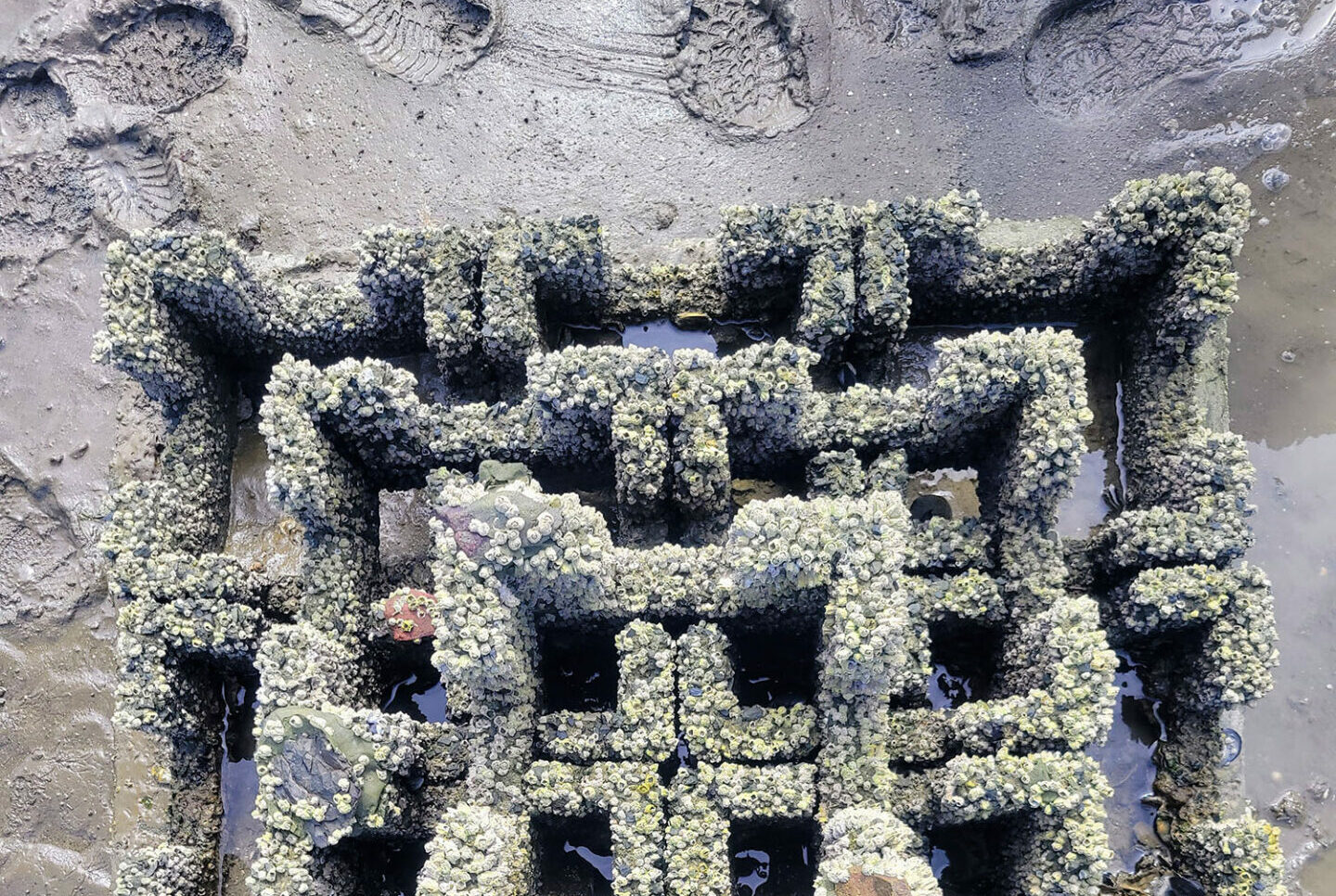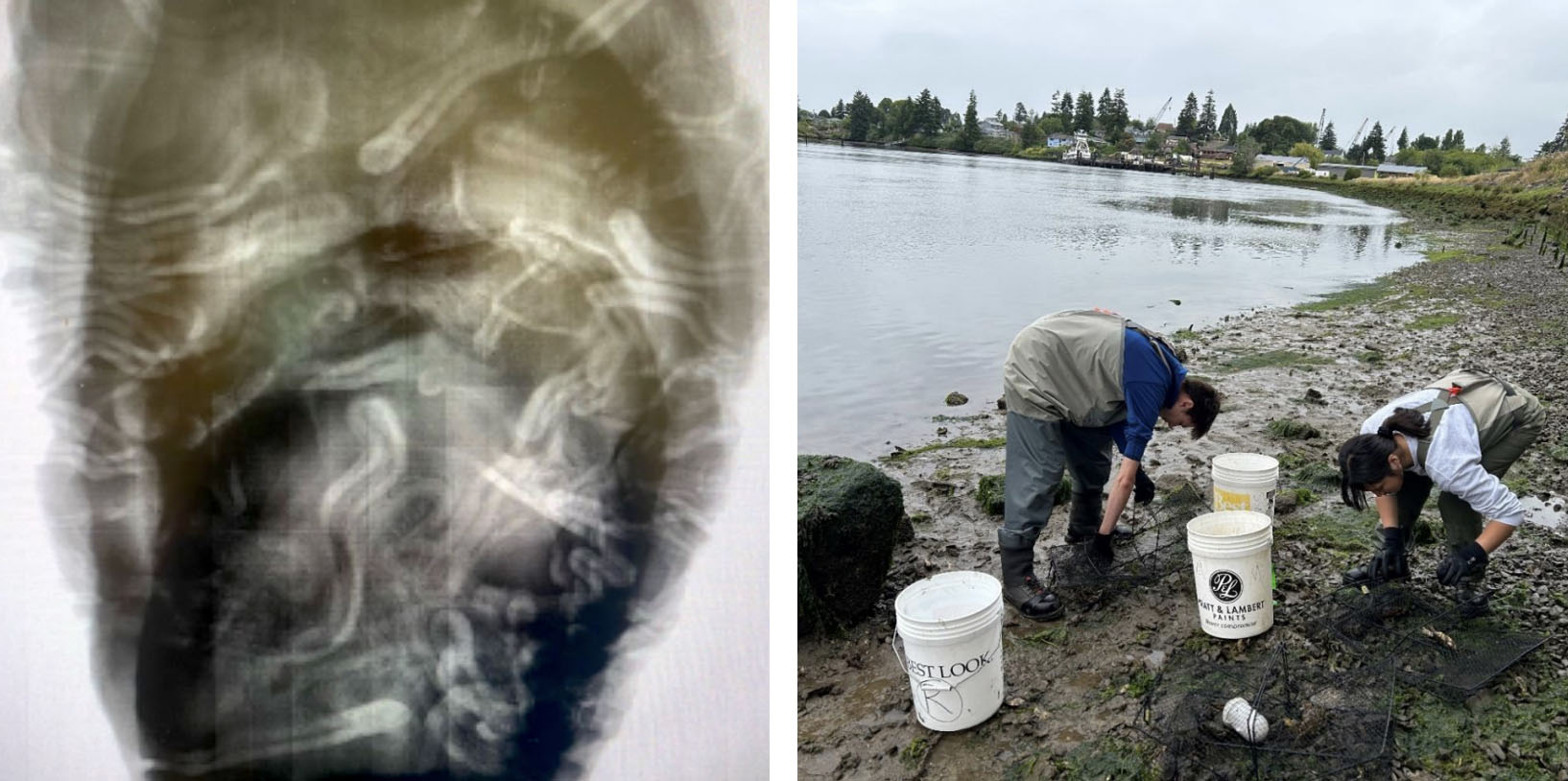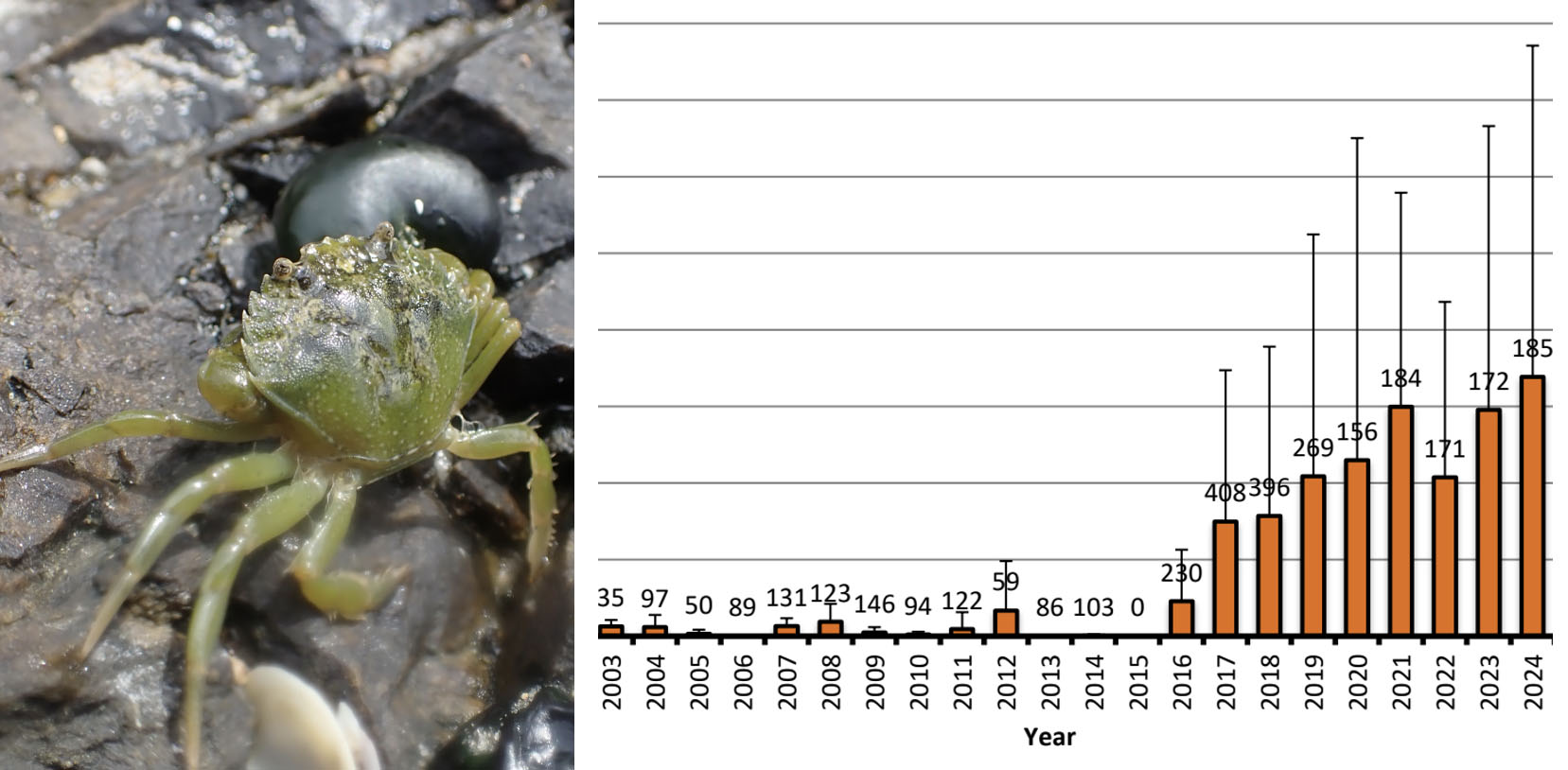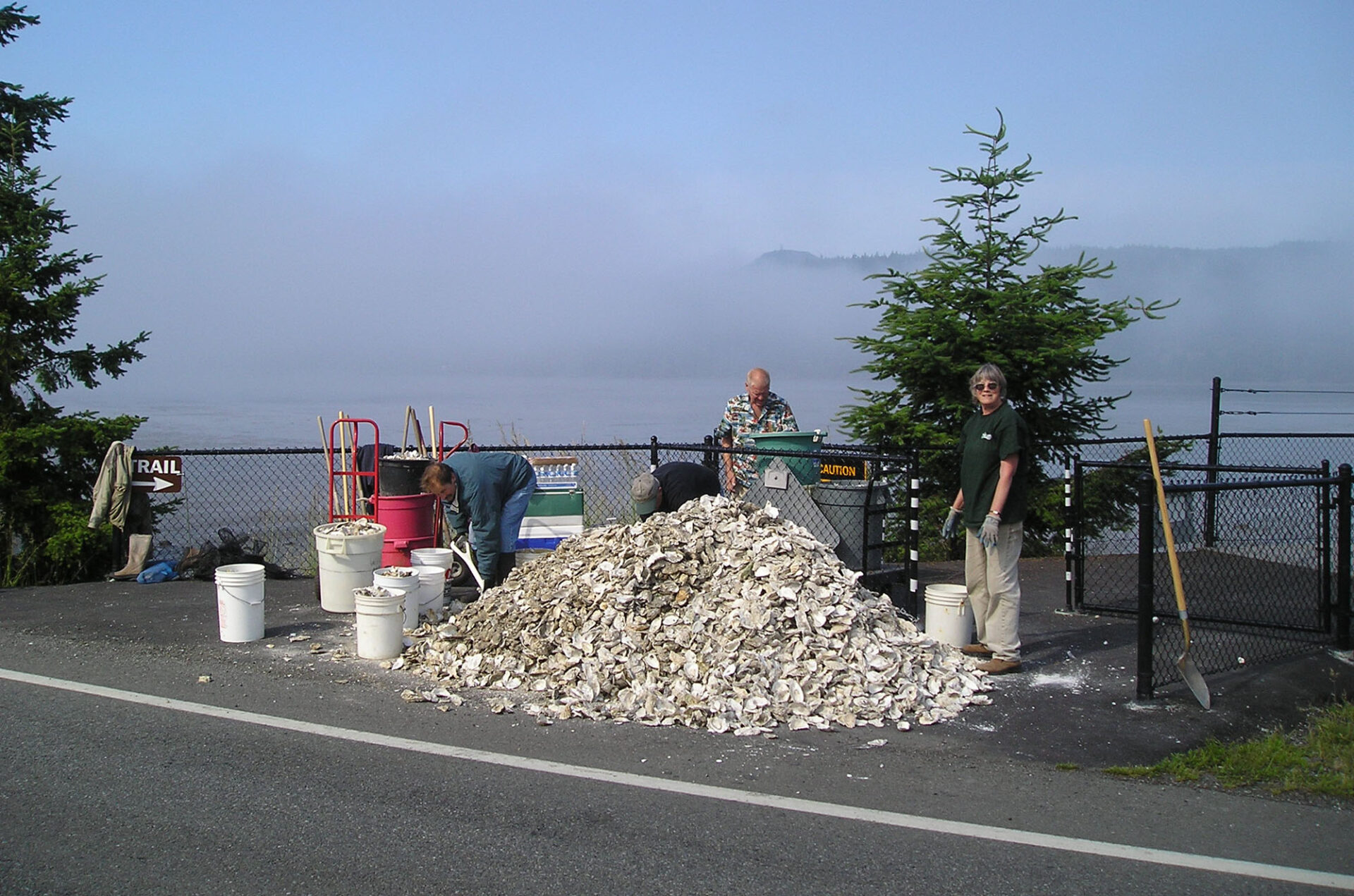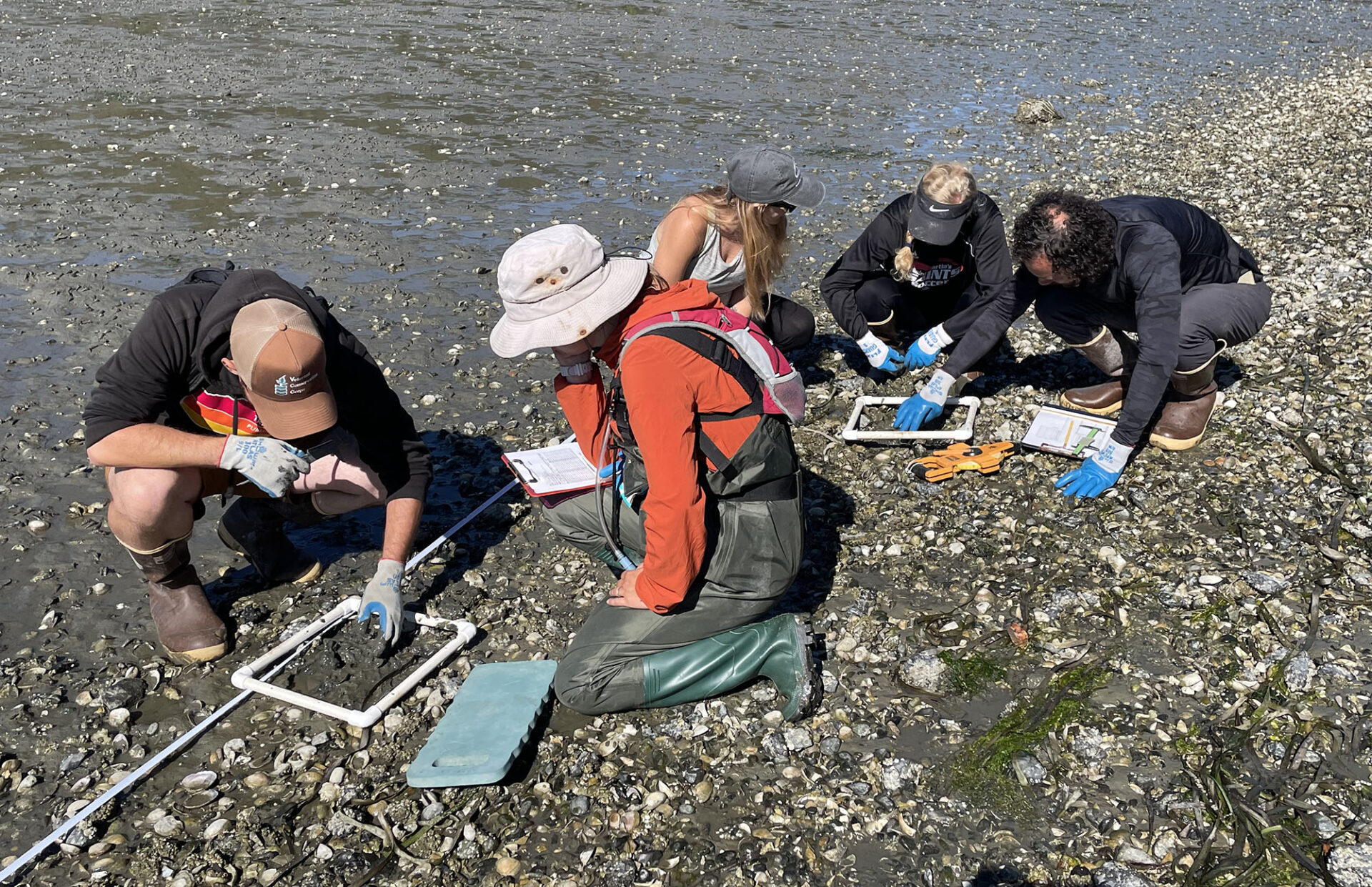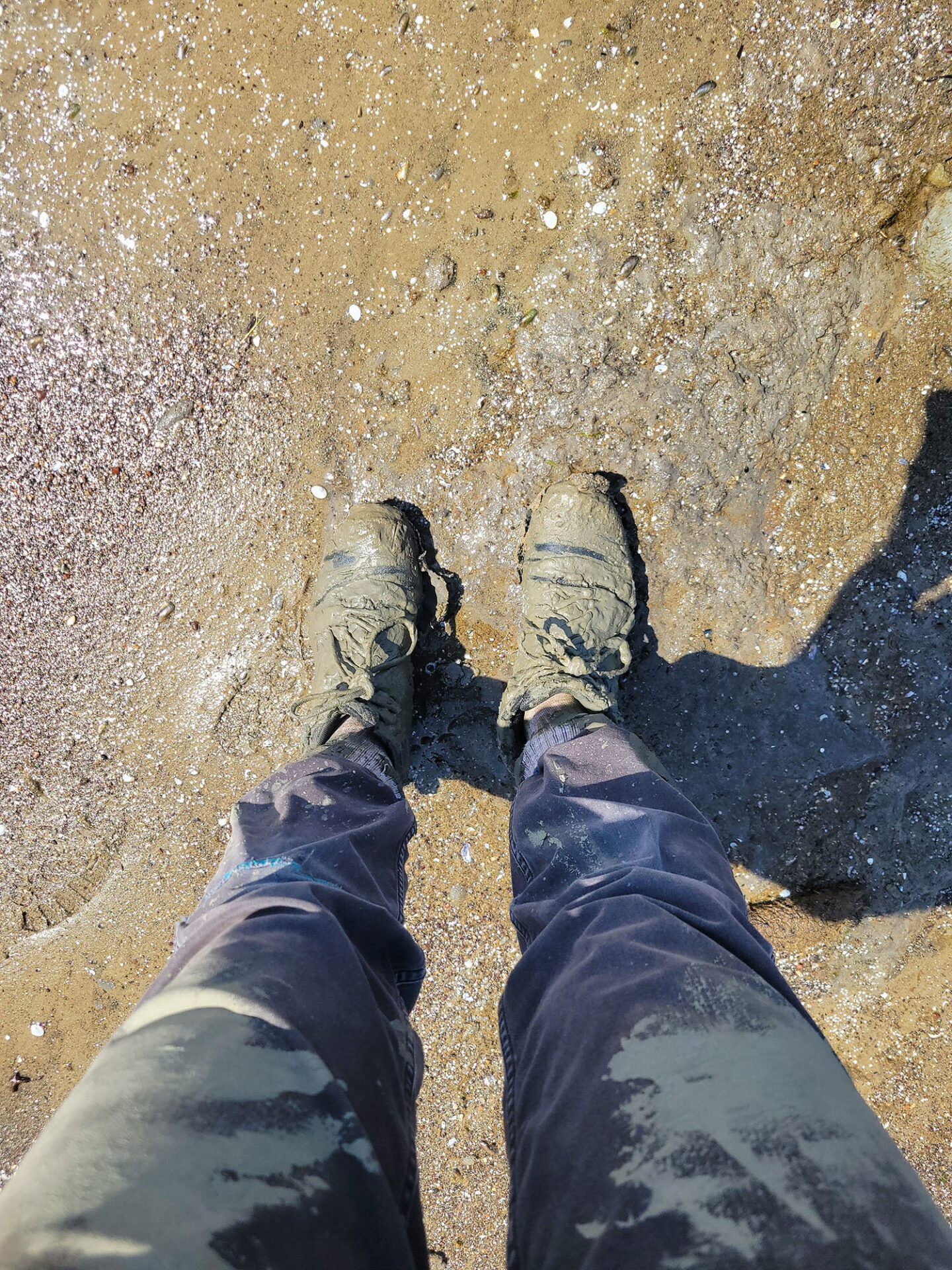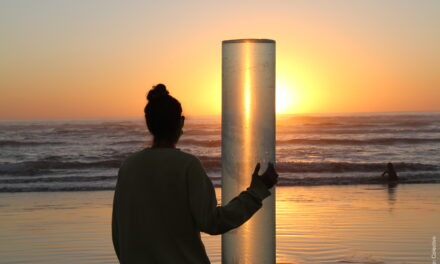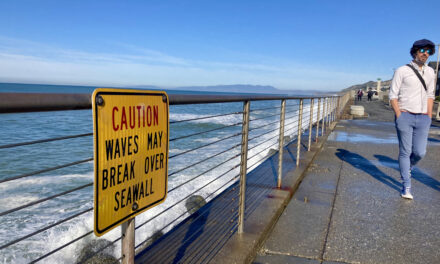Photo: Chela Zabin
A Living Shoreline, Built One Oyster at a Time
From the eelgrass-lined shallows of Southern California to the tide-sloshed inlets of Puget Sound, scientists and restoration teams are betting on a humble bivalve to do more than just survive. Placed in the right context, oysters and their habitat partners, like eelgrass and cordgrass, can buffer waves, trap sediment, increase biodiversity, and create living, shifting edges that grow with the coast. But success is far from guaranteed. Restoration teams are grappling with climate stress, crab invasions, and a coastline crowded with human activity. They’re also experimenting with just how much grey infrastructure this local species needs to stand taller in the path of waves and sea level rise. Can these tiny creatures — and the scientists who study them — hold the line?
Extremes-in-3D
A six-part series of stories in which KneeDeep Times explores the science behind climate extremes in California, and how people and places react and adapt.
Supported by the CO2 Foundation and Pulitzer Center.
FULL READ
A Living Shoreline, Built One Oyster at a Time
The mud at Richmond, California’s Giant Marsh grabs like a hungry thing, swallowing my feet whole. I walk toe-first, heel raised, lest the suction of the mud schlorp off my boots. Below, quieter dramas: mud snails gliding by on their single muscular foot, bird tracks stamped into the sediment like velociraptor prints. The air smells tangy — part salt, part decay, not unpleasant. Thoroughly muddy, we reach our destination and lean over strange structures: geometric blocks squatting in the shallows. Their surfaces bristle with barnacles. And in their crevices and pools, we spy our quarry. We’ve come to see the oysters.
Along the West Coast, scientists and restoration teams are betting on this humble bivalve to do more than just survive. Olympia oysters, whose native range runs from Baja California to southern Alaska, are being enlisted as ecological engineers in nearly 40 “living shoreline” projects in the US alone according to a NOAA inventory. It’s a softer approach to coastal defense. Instead of holding the ocean back with rock and concrete, living shorelines work with natural systems — oysters, eelgrass, tides — to protect the coast, often adding an element of human engineering to do what nature can’t do alone.
EXTREMES-IN-3D
A seven-part series of stories in which KneeDeep Times explores the science behind climate extremes in California, and how people and places react and adapt.
Series Home
Click here to enter
Part 6: Infrastructure
Part 7: Aftermath
Supported by the CO2 Foundation and Pulitzer Center.
The key thing is that unlike seawalls or levees, living shorelines can move. As seas rise, oysters, eelgrass, and other biological elements have the potential to migrate inland, as long as there’s space, and to keep the edges of the continent from unraveling.
But establishing these moveable ecosystems is no easy feat. Here at Giant Marsh, and at many other sites from San Diego to Puget Sound, researchers are experimenting with oyster shell placement, tidal depth, species pairings, and other variables in an effort to create truly resilient habitats. Each project adds a fragment of knowledge to the larger picture: how to restore ecosystems and build coastal protection that can adapt to a future much less stable than the past.
The Biological Backstory
The Olympia oyster, the only oyster native to the West Coast, doesn’t put on the same show as its craggy, reef-building Atlantic cousins. Olympia oyster beds are humbler and lower-profile. This, combined with the shorter history of oyster farming on the West Coast, means they’ve drawn less attention.
Still, Olympia oysters have a quiet charisma all their own. In the right conditions, Olympia oysters naturally form dense clusters like low, lumpy speed bumps on the seafloor. While these bumpy beds are modest in size, they can form rough-surfaced, low-slung breakwaters. And because Olympias grow shell slowly, their larvae are more resilient to ocean acidification than most oyster species’.
They’re also more involved parents: unlike most oysters, which jet eggs and sperm into the water to be fertilized externally, Olympias brood their larvae inside their mantle cavity, which helps them survive colder waters. In addition, as “sequential hermaphrodites,” they get to try their hand at both motherhood and fatherhood. With the oyster’s first spawning cycle, it acts as a male. In following cycles, it will switch between the sexes.
Life cycle of the Olympia oyster. Bay-grown example. Illustration by Julia C. Blum. Photo: Sonya Bennett-Brandt
Baby oysters are surprisingly active seekers. After gestating in their mother’s shell, Olympia oyster larvae emerge with tiny, translucent shells and swim through the water, eating plankton. After one to four weeks, they settle onto a new, permanent home and glue themselves there, looking like little more than a spot of grit.
These “spat” can stick to any hard surface, but they’re actively drawn to the chemical cues of oyster shell; they’re even specifically drawn to their own species of oyster shell (although in a pinch, a cousin’s will do). Research on the Australian flat oyster has found that larval oysters may be drawn to the sound of their compatriots: broadcasting healthy reef soundscapes through underwater speakers increased oyster recruitment.
Eelgrass, too, is an underwater engineer. This subtidal seagrass grows in shallow water meadows. It stabilizes sediment with its deep, dense root systems; filters nutrients and pollutants; and provides habitat for a whole cast of juvenile fish and invertebrates. And eelgrass buffers wave energy, absorbing the force of waves with the back-and-forth sway of its long, skinny leaves.
Underwater and understated, both species are ecological workhorses.
Eelgrass Takes the Lead —
Upper Newport Bay, Southern California
The West Coast presents a patchwork of challenges. In Upper Newport Bay, near Los Angeles, Cal State Fullerton marine ecologist Danielle Zacherl has spent years exploring whether oysters and eelgrass are more powerful together than apart.
Oysters help clear the water of microbes that harm eelgrass, while the grass, in turn, draws carbon dioxide from the sea, easing acidity and making it easier for oysters to grow more shell. But oyster reefs can also muscle out eelgrass beds, competing for space in the shallows. And the grass’s talent for quieting waves and trapping sediment can backfire, smothering oysters in silt and clogging up their gills.
Eelgrass. Photo: Sean DuFrene, CSULB
“We know that eelgrass coexisted [with oysters] in estuaries, but most of the [research] that’s looked at oyster impact on eelgrass has done it in a configuration that’s not particularly natural for Southern California,” she says. Other research projects have placed oysters directly within the eelgrass beds, co-mingling the two species. “That didn’t seem relevant for us, because what we see in Southern California is a little bit more zonation.”
In Zacherl’s neck of the woods, oysters tend to cluster in the lower intertidal zone, while eelgrass beds tend to grow beneath and adjacent to them. Oysters also feel at home in the deeper subtidal zone — “but the thing is,” says Zacherl, “in Southern California, there’s not a lot of subtidal, hard, structured habitat for them to settle onto anymore.” So the Upper Newport Bay Living Shorelines Project team, which also included researchers from CSU Long Beach and Orange County Coastkeeper, designed a restoration layout that mirrored this regional pattern: Olympia oysters just above, eelgrass just below. “That was the configuration we wanted to explore.”
Zacherl’s team wanted to know: could planting these two foundation species in proximity strengthen restoration results? They planted eelgrass in four quadrants and laid a bed of dead oyster shell for new oysters to seed, since oysters grow best on other oysters. Then, they waited.
When they measured density and growth, eelgrass stole the show. It grew “spectacularly well,” says Zacherl. They wanted to keep it isolated in particular plots, but the plant had other ideas. “What ended up happening was the eelgrass spilled out of the restoration plots and just completely overgrew [their quadrants] at three of the four locations.”
Use of a quadrant to measure oyster density. Counting continues after sunset. Photos: Danielle Zacherl
There were also subtle signs that the oysters were boosting eelgrass performance. A graduate student’s project found that whenever eelgrass was growing close to oysters, the oysters were enriching the soil porewater with ammonium, a usable form of nitrogen that the eelgrass were loving. As a result, the eelgrass had increased below-ground growth, meaning a better grip on sediment, meaning stronger coastal protection.
For the oysters, more mixed results: “At one of the four sites, the beds maintained really great integrity, and at the other three sites they really completely degraded,” says Zacherl. The densities of oysters were still twice as high as when they started the project, but without accumulating into the bumpy beds that soften waves.
The culprit seems to be human use: a graduate student found that the one spot where the oyster beds stayed in one piece had almost no onshore human visitors and no boating activity, whereas the other three locations were heavily impacted by people and boat wakes. It doesn’t take much to impact a growing oyster. Boaters zoomed by, anglers stood on piles of shell to fish, dogs trampled the beds, and beachcombers even collected oysters for art projects — flattening the shells across the sand. “In Southern California, it’s really, really hard to have mudflats where there’s not a lot of human activity,” says Zacherl.
According to Zacherl, the biggest project consideration in Southern California is simple: “Location is everything.”
South of Newport Beach, the Port of San Diego deployed 360 oyster reef balls along the northern edge of a wildlife reserve to protect the eroding shoreline and boost native oyster populations. Annual monitoring indicates a healthy response. Photo: Port of San Diego
In the Court of the Oyster Castle — Giant Marsh, Northern California
At Giant Marsh, in the San Francisco Bay Area’s Contra Costa County, the oysters don’t have to tough it out on their own. They get castles.
About 200 of them, in fact — low, chunky structures made of “baycrete,” a mix of concrete, native sand and gravel, and crushed oyster shell to attract, or “recruit,” oyster larvae.
The San Francisco Bay Living Shorelines Project at Giant Marsh arranged these gray, nubbly blocks to give the bivalves a home and a head start at recruitment. Each castle is like a miniature apartment complex for marine life. At low tide, water pools in their shaded interiors, forming what the Smithsonian Environmental Research Center’s Chela Zabin called “ad hoc tide pools.”
“Natural, low-lying oyster beds do not do much to reduce wave energy and build marshes, especially in deeper estuaries like San Francisco Bay,” says Zabin. “In the Bay, we really need artificial structures like reef balls or oyster blocks to break waves.”
The strategic placement of stone, sand fill, and other structural materials can all play a role in creating living shorelines, as described by Restore America’s Estuaries, “hybrids of traditional shoreline armoring and the softer approaches to shore protection.”
In 2023, the oysters here had to weather a one-two punch of unusually high temperatures and heavy rains, which led to low salinity in the marsh. The population crashed. Two years later, to check in on how they were doing now, Zabin, the Coastal Conservancy’s Marilyn Latta, and her colleague Vanessa Aczon visited the site on a May day when the low king tide had pulled back far enough to make the whole site walkable — if you could manage not to lose a boot in the process.
The flats were alive: a blue heron, egrets, a piece of seaweed encrusted with fish eggs. A bald eagle flew overhead, then dropped low, chased by a hawk that seemed to want whatever it had in its talons — possibly a snake, or a very long fish. Like in Southern California, the team here is experimenting with pairing oysters with eelgrass, as well as plugs of cordgrass on the shoreline itself, trying out different combinations, planting techniques, and elevations to see which perform best at slowing erosion. “There’s a lot of erosion sharpening up the marsh edge,” said Latta. “We’re planting [cordgrass] in combination with the other features to see if we can help reduce that.”
Zabin checks out erosion on the marsh edge. Photo: Sonya Bennett-Brandt
Out on the flats, the castles sat in the mud like ruins from a miniature Atlantis. They’re not beautiful in a classical sense — more Lego bunker than coral reef — but they’ve been designed for function: to slow waves, anchor habitat, and stand up to years of tidal pummeling. This is the new, gray-green aesthetic of living shorelines: part mudflat, part engineering experiment, part sculpture garden.
And in the tide pools, crannies, and chinks: Olympia oysters. If you spend enough time with marine ecologists, you might begin to find something kind of cute about them — the way their rippling shells grow into each other, the speckling of tiny oysters riding piggyback. Latta ran her fingers along the undersides of the baycrete blocks and found even more, larger oysters, pasted to the cool undersides.
Oyster castle made of baycrete, five years after it was placed in the mudflat. Photo: Sonya Bennett-Brandt
“I think we’re getting a really clear signal that these microhabitats that are a little more protected and a little cooler are good,” says the Smithsonian’s Zabin. The castles at the lowest tidal elevations, where they stay wet and cool longer, are home to the highest oyster densities. “It’s just adding to what we’re learning, which is that it’s good to have a variety of different depths and different approaches,” says Zabin. “It’s the portfolio, right? You try a bunch of different things, and some years some are going to work better than others, but you are more likely to have a better outcome overall.”
“Each iteration we get to refine it a bit more,” Zabin says.
Shell Games — the Oregon Coast
Samuel Chan’s oyster shell looks solid – until he holds it to the light. Tiny black cavities thread through the nacre, each a tunnel carved by a tiny worm.
Climate change has spawned other threats: parasites and predators whose populations are shifting with the warming Pacific. On the Oregon coast, researchers are unraveling how these heat-adapted organisms are pulling aquaculture and oyster restoration into the same uneasy current. Fixed to the muddy bottom, oyster beds are the first to feel the squeeze as warming waters and opportunistic invaders converge. And if the oysters falter, the protective shoreline functions they provide — filtering, stabilizing, softening — will falter with them.
Chan, a biologist and invasive-species expert for Oregon State University and Oregon Sea Grant, focuses on the factors that make West Coast shellfish more susceptible to different parasites and invasive species. One of these is the mud blister worm, which tunnels into the oyster’s shell to live there.
Over Zoom, Chan lifts his shell to the camera — it’s covered in darkened “galleries,” where worms have tunneled in to create a cozy home. It’s not eating the oyster, says Chan – ”it’s just a very snuggly environment.” At first, researchers thought this was mainly a problem for oyster growers; the tunnels fill with mud and worm excrement, with a delicate layer of shell overlaid. Rupture one while eating, and you’re in for an unpleasant mouthful.
A scan of an oyster reveals a worm infestation. The research crew at work in Coos Bay, Oregon. Photos: Sam Chan & South Slough Reserve.
But recently, after giving oyster shells a CT scan to get a better look inside them, researchers realized the worm burrows are also likely affecting the lifespans of wild oysters. “What we notice is that there were micro-fissures within the entire shell,” says Chan. “In terms of the energetics of an oyster, that gives us clues that the oyster has to go about building or repairing their shell.” But repair after repair, the micro-galleries don’t go away, wasting the oyster’s energy and making its shell fragile. “And when you think about climate change and the changing alkalinity in our marine waters, it’s possible that these oysters face increasing difficulty repairing their shells.” Living shoreline oyster projects can’t proceed if their star bivalve is crumbling away.
The problem starts, quite literally, from the bottom. “One thing we’re finding out is that [the mud blister worms] tend to live on the ocean floor,” says Chan. That benthic zone, where oysters tend to cluster, puts the beds directly in harm’s way. “Bottom culture oysters have a higher incidence of infestation – 80% plus.” Oysters grown in suspension by oyster farms are looking at 30 to 40%. In other words, the very thing that makes oysters such good anchors for living shorelines — being rooted on the intertidal sea floor — makes them vulnerable.
In another ecological tangle, the worms may be softening oysters up for an invasive predator on the rise: the five-spine crab (also known as the European green crab; Chan and his colleagues advocate for using invasive species names that make them easier to identify, rather than a nationality or ethnicity).
A worm-riddled shell is easier for a crab to crack. The five-spine crab is also a menace to eelgrass. “[The crabs] just like to mow it kind of like a lawn,” says Chan – making it easier to live and hide in. That makes the crabs a double threat to the foundation species that undergird many West Coast living shoreline projects.
In Oregon, monitoring five-spine crab (above) populations is a priority, and the trend lines are disturbing (mean crabs per trap per day in Coos Bay shown above). In the past, native red rock crabs have been able to compete, but warmer waters, especially in eelgrass beds, are opening up oyster reefs to invaders. Crab Photo: Sam Chan; Chart Shon Shooler, South Slough National Estuary
As threats multiply, the lines between restoration and industry blur. Crabs and worms don’t discriminate between a farmed bed and a natural one. As a result, there’s a certain degree of synergy between oyster farmers and ecologists in Oregon. Research funded by one often benefits the other. “Oyster growers see themselves not just as farmers, but as contributing to the ecology, whether it’s the filter-feeding ability or the reef beds that are formed,” says Chan.
On the other hand, many invasive threats were introduced by the oyster industry in the first place. Five-spine crabs largely hitched a ride to the West Coast in ballast water – but they were also brought in through the movement of shellfish, says Chan. “What they did was they packed the oysters in eelgrass [to ship them]. And then people just tossed the shells and the packing material into the water. And guess what? We have a problem.”
This feedback loop — warming waters weakening oysters, invasives getting stronger, which in turn weakens oysters further — is what makes the web of predator and prey so difficult to untangle. If the foundation species collapse, the rest, including the push for living shorelines, may not hold.
The Long Game — Fidalgo Bay, Washington
After the ups and downs of newer oyster restoration efforts, it’s tempting to ask: what will these sites look like in 20 years? For a hint at the longer-term trajectory, look north to Fidalgo Bay — a slender, sheltered bay near Anacortes, Washington, where native Olympia oyster restoration efforts in northern Puget Sound began more than a decade ago. The project, led by the Skagit County Marine Resources Committee and Puget Sound Restoration Fund, offers a glimpse of what happens when the work sticks around long enough to weather the boom-and-bust cycles of oyster life.
Paul Dinnel goes way back with shellfish, combing the beaches of Pensacola, Florida, in search of crabs as a second grader. “That pretty much set the stage for my life as a marine biologist,” he says. He joined the Fidalgo project in 2002 with the Skagit County Marine Resources Committee.
This 2000s project did things the old-fashioned way: after growing oyster spawn from a hatchery and settling them on shell, volunteers hauled mesh bags of the seeded shell out to the bay, shook loose their contents, and scattered the shells like crunchy confetti across the flats. It was a hands-on process: muddy, muscular, and a little repetitive.
Although they didn’t use man-made structures to jumpstart the oyster beds, the work hasn’t been entirely “natural.” At one point, they brought in two barge-loads of clean Pacific oyster shell and flushed them across the site with fire hoses. “Once we did that, settlement increased dramatically,” Dinnel says.
More than 130 volunteers ended up participating in the project. And there were a few other unexpected restoration partners that Dinnel wanted to shout out: gulls. “The gulls like to go down at low tide and dig up clams, fly them up into the air, drop them, and break them open for breakfast or lunch,” he says. After the feast, the mud is littered with clam fragments. “[Oyster] larvae, we found, were settling on those broken clam shells quite nicely.”
The oysters weren’t the only ones benefiting. A major goal of the project was to improve water quality — something that oysters, as natural filtration machines, are uniquely suited to help with. As they feed, they incorporate excess nitrogen into their bodies, and any particles they can’t eat get shaped into mucus-coated packets called “pseudofeces,” which settle on the seafloor where they are less harmful.
As a result, oysters are often used by scientists to detect pollutants — placed in the water, then fished out to see what pollutants they’ve collected. They also help fight one of the coast’s more insidious threats, harmful algal blooms. These blooms have become more frequent in the Pacific Northwest, fed by nutrient runoff and waters warming with climate change. Oysters help by eating the algae directly, keeping the blooms in check before they can wreak havoc on marine life. And, of course, there’s an eelgrass connection: the plants need sunlight to survive, which means they need clear water. Oysters help by filtering out the particles that cloud the water column, creating a clearer path for sunlight to reach the eelgrass beds below.
In the wild, precisely quantifying the water-cleaning power of oysters is challenging. Both oyster and algae populations fluctuate widely each season, meaning it would take extensive, long-term monitoring to gather enough data for a meaningful correlation. In the lab, however, the evidence is clear: put oysters in an aquarium of murky water, watch them slurp up the algae, and the water turns visibly clear.
Population growth is easier to track. At Fidalgo Bay, they monitored recruitment by placing bags of empty shells in the water, then collecting them to see how many oyster babies had settled there. What followed was a roller coaster ride.
“After doing that for about three or four years, we started seeing signs of natural recruitment,” says Dinnel. They started to feel a little optimistic, but then, for the next four years, they saw virtually zero spat — “not so good.” Then, 2009 came along. “All of a sudden we had 266 oysters per 100 shells in our bags, and that was looking a lot brighter,” says Dinnel. Next, another downturn: four years of spotty, low recruitment. “But then they picked up again in 2014 and there has been pretty high-settlement ever since.”
Survey of the oyster population. Photo: Paul Dinnel
Despite the ups and downs, the oysters made it through. Dinnel credits some of this success to the bay’s hydrology. “Fidalgo Bay is kind of like a bathtub,” he says. Once oyster larvae are released, the tide doesn’t pull them too far out. “They pretty much slosh back and forth within Fidalgo Bay but don’t get flushed out, and then they settle.”
In the latest count, there were a staggering 5.5 million oysters in this bay in northern Puget Sound. “It worked out much better than I ever thought it was going to,” says Dinnell. Now, the hope is that the beds will export larvae to other areas, sending out babies with the tides.
Give ‘Em Shell
Compared to the much longer history of cultivation on the East Coast, West Coast oyster science is still in its early chapters. Our Olympias are subtle, scattered, and low-slung, easy to miss unless you’re down in the mud with them. Yet, in their understated way, these native oysters are pulling weight far beyond their size.
All along the West Coast, researchers are still piecing together the best ways to help them thrive — what structures work, what depths matter, which partnerships with eelgrass or cordgrass offer the most resilience. Restoring oysters is not about rewinding time to some pristine, pre-colonial shoreline. It’s about learning how to weave wildness back into a coastline that’s been hardened, dredged, and straightened.
Five-year-old oyster ball on the highly urbanized shore of Heron’s Head Park in San Francisco, where landscape designers also experimented with coarse beach material as shore protection. Giant Marsh and Heron’s Head are among half a dozen pilot projects now being used to inform a regionwide permit for 10 larger-scale living shoreline projects, spearheaded by the California Coastal Conservancy. Photo: Chela Zabin
“Everyone working on living shorelines knows how dire it is, in terms of what we’re facing with climate change and sea level rise and even the uncertain federal landscape,” says the California Coastal Conservancy’s Latta. “So we really want to scale these projects up. We want to keep iteratively building, and not stay too small-scale to actually have an effect.”
If the Olympia oyster isn’t flashy, maybe that’s part of its charm. Its shell looks like a fossilized potato chip. Its babies ride the currents in search of kin. And it can migrate with our shorelines as they creep eastward — to a point. If the tide comes in and meets concrete, the beach will retreat and the water will get too deep for oysters and eelgrass to survive. Like the marshes, they need transitional habitat along the coast so oyster beds and eelgrass meadows can move as the shoreline moves in all its slippery, soft forms. If we allow it, the tide can bring us oyster larvae to drift in on the current, searching for somewhere to settle. And in settling, they’ll bring all the quiet gifts of a living shoreline: wave protection, water clarity, nursery habitat, the strength of many small shells.
Reporter’s shoes after field visit to cover this story.
MORE
- A Three-Minute Video Walk Through Giant Marsh
- Native Olympia Oyster Collaborative
- Living Shorelines, The Science & Management of Nature-Based Coastal Protection, 2017
- (Read the chapter on San Francisco Bay by Boyer et al. here)
EXTREMES-IN-3D
SERIES CREDITS
Managing Editor: Ariel Rubissow Okamoto
Web Story Design: Vanessa Lee & Tony Hale
Science advisors: Alexander Gershunov, Patrick Barnard, Richelle Tanner, Emily Corwin, Terry Young
Series supported by the CO2 Foundation.
Reporting for first story in series supported by Pulitzer Center, Connected Coastlines.
Oyster Story
Banner video Giant Marsh (including SFSU & Smithsonian scientists and volunteers): Jak Wonderly, plus stills by Chela Zabin
Layout & Art Direction: Afsoon Razavi

